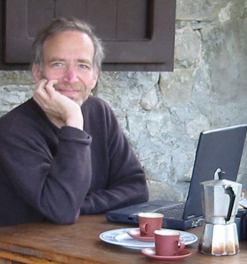A Palestinian friend who now lives in Atlanta recalls fondly that she grew up in a part of Israel where Jews, Muslims, and Christians lived together in harmony, and she sees no reason why that can’t happen again. That is why she believes that the two-state solution is wrong, and that there must be one democratic, tolerant, multiethnic state between the Jordan River and the Mediterranean Sea.
She doesn’t feel this way because she wants to bring about an end to the Jewish state, although that in effect is what it means. She doesn’t want what Hamas wants, which is a Muslim state that gets the Jews out of there. She wants the tolerance and harmony she remembers from her childhood, and the democracy she loves in her adopted country.
She is not alone. Her dream may be naïve, but it is increasingly widely shared, among moderate Palestinians and among fair-minded people throughout the world. Many believe it is an idea whose time has come.
That is why the recent threat by Abu Mazen—Mahmoud Abbas—to resign as the leader of the Palestinian Authority could be a game-changer. He has made such threats before, but this one may be different. It was provoked by the (also recent) change in America’s position on the settlement freeze, in which what Israel views as “natural growth” of existing settlements under certain “restrictions” will be tolerated by Obama’s administration.
Some American Jewish leaders are taking credit for this change, and certainly I don’t like to see a U.S. administration trying to make policy for Israel. But I’m not sure those Jewish leaders fully understand the powers of the weak, which were prominently on display in Abu Mazen’s threat to resign.
At a minimum, it is a brilliant political gambit, and one that has apparently already borne fruit. In the few days since that announcement, he and his colleagues have succeeded in postponing the scheduled January elections, so that Abbas can remain in place for the immediate future.
In a seeming contradiction that is of course part of the game, his government has also said it may go to the UN to seek recognition of a Palestinian state. Netanyahu has duly counter-threatened that if the Palestinians do that, Israel will also begin to act unilaterally. However, all this depends on there being a government in the West Bank.
What if there isn’t one? The threat to walk away may be a kind of nuclear option for Abu Mazen, because a number of others in the leadership have said that they will follow him. What happens if the Palestinian Authority effectively dissolves itself?
In that case, Israel will be left holding the bag, and it will be filled with nasty things. Hamas will try to fill the vacuum as it did in Gaza when Fatah failed miserably there. But Israel cannot withdraw from the West Bank. There are not just a few thousand settlers there, there are hundreds of thousands, and there is no popular will in Israel in favor of removing them by force.
So the IDF stays there, protects the settlers and their roads, tries to root out Hamas terrorists, just as it does now. The difference is that there will not only be no negotiating partner on the other side, there will be no authority there except Israel. And the world will gradually give up on the idea of a two-state solution, because the Palestinians won’t want it any longer.
Some Israelis will be happy about that, but most (in poll after poll) realize that only a two-state answer is compatible with the long-term existence of a Jewish state. Moderate Palestinians who have no truck with terrorism do understand the demographic realities, and they can be patient for another generation or two. Meanwhile, the “apartheid” epithet applied so often to Israel will become a recognized truth.
It’s not apartheid when you wall off enemies in a bordering state, or an entity perceived as being on its way to becoming a state. It’s quite another if there is no authority there but you, and the world increasingly sees you the way it saw South Africa: a unified state in which a racial minority rules a racial majority in a clearly discriminatory and even brutal way.
As an American, I don’t ever tell Israelis what to do. However, I try to keep them informed about American opinion. I do not believe that Americans will be friendly toward a Jewish state with a non-Jewish majority that will never have a chance at equal rights.
Saib Erekat, a key spokesman for Abu Mazen’s government, said recently that if Israel continues to refuse to freeze settlements, the only course open to Palestinians will be to “refocus their attention on the one-state solution where Muslims, Christians and Jews can live as equals." He went on to say, "It is very serious. This is the moment of truth for us."
It could be the moment of truth for Israel too.



